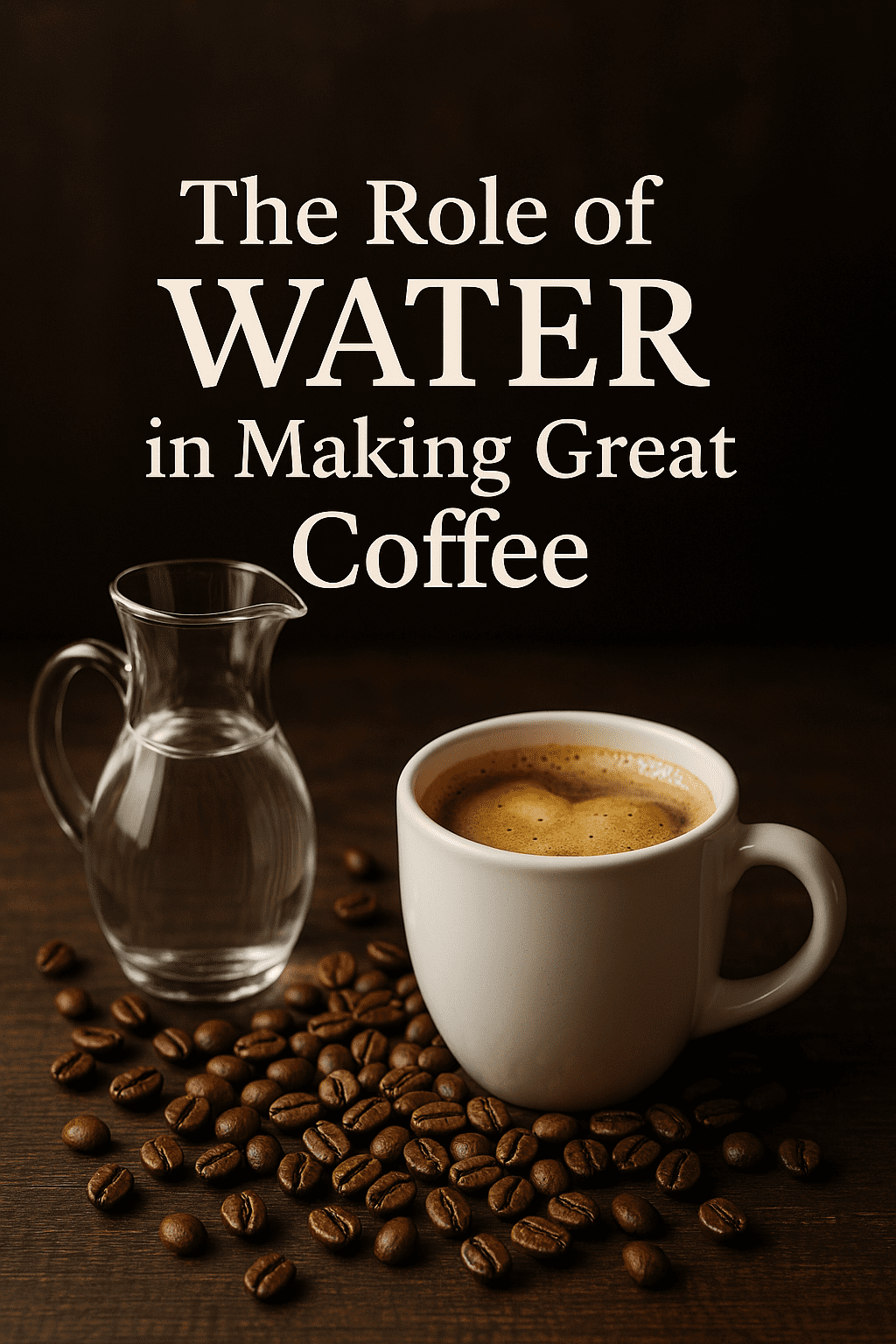It’s Not Just About the Beans
When we think about making a great cup of coffee, most of us immediately focus on the quality of the beans, roast levels, and brewing methods. But what about water?
Here’s a surprising fact: coffee is 98-99% water. That means if your water isn’t up to standard, your coffee won’t be either — no matter how premium your beans are. Understanding the role of water in coffee brewing is essential for anyone serious about flavor, consistency, and the overall experience of that perfect cup.
Let’s explore how water impacts coffee, what kind of water you should use, and how to troubleshoot water-related issues in your brew.
What Makes Water “Good” for Coffee?
Water may look simple, but it’s actually a complex mix of minerals, pH levels, and dissolved solids — all of which affect your coffee in subtle but significant ways.
Here’s what defines high-quality brewing water:
- Neutral to slightly acidic pH (6.5–7.5)
- Moderate hardness (calcium and magnesium)
- Low chlorine and contaminants
- No unusual odors or taste
When your water is “off,” your coffee might taste bitter, flat, sour, metallic, or just… boring.
Hard Water vs. Soft Water: What’s Better?
- Hard water contains higher levels of calcium and magnesium. It can enhance some flavors in coffee, especially body and depth. But over time, it can lead to scale build-up in your equipment.
- Soft water lacks these minerals, which may result in coffee tasting more acidic or thin. However, it’s better for your equipment and may highlight lighter flavors in specialty beans.
Ideally, you want balanced mineral content — not too hard, not too soft. Many baristas and coffee shops use water with 75-150 ppm (parts per million) of total dissolved solids (TDS) for optimal brewing.
Filtered Water: A Must for Home Brewers
If you’re brewing at home, you might be tempted to use tap water. The problem is, tap water varies dramatically from one city to another — and sometimes even between neighborhoods.
That’s why filtered water is your best bet.
Filtered water helps:
- Remove chlorine, which ruins flavor
- Reduce heavy metals and sediments
- Improve consistency from brew to brew
You can use:
- A pitcher-style filter (like Brita or PUR)
- An under-sink filtration system
- A refrigerator water filter
- A dedicated coffee water filter kit
The investment pays off in dramatically better taste.
Distilled or Purified Water: Should You Use It?
You might think the cleanest water is the best — but not necessarily. Distilled or reverse osmosis water contains little to no minerals, which means it can make coffee taste flat and may even pull too many solubles from the coffee grounds, leading to over-extraction.
However, there are solutions.
If you’re using distilled or RO water:
- Consider adding a mineral packet like Third Wave Water
- Or mix it 80/20 with filtered tap water to balance it out
Mineral content is crucial. Your water should support extraction, not strip your coffee of its character.
Temperature Matters Too
Even with the perfect water composition, you’ll ruin the brew if your water temperature is off.
- Ideal water temperature: 195°F to 205°F (90°C to 96°C)
- Below 195°F → Under-extraction (sour, weak)
- Above 205°F → Over-extraction (bitter, dry)
A simple digital thermometer can help, or just bring water to a boil and let it rest for 30 seconds before pouring.
Pro tip: If you’re using a kettle with temperature control, set it right at 200°F (93°C) for most brews.
Brewing Methods and Water Requirements
Different brewing methods react differently to water quality.
Pour Over (V60, Chemex)
- Very sensitive to water clarity and mineral content
- Highlight high acidity or bitterness if water is off
French Press
- More forgiving, but flavor can still suffer with poor water
Espresso
- Extremely sensitive — since extraction happens under pressure, even minor mineral imbalances can cause major taste differences
Cold Brew
- Uses water for extended periods (12-24 hours)
- Requires clean, filtered water to avoid “muddy” or stale flavors
No matter the method, clean and balanced water = better coffee.
The Science Behind Water and Coffee
What’s actually happening when water meets coffee grounds?
Water is a solvent. It extracts:
- Acids (bright, fruity notes)
- Sugars (sweetness)
- Oils and soluble compounds (body and depth)
- Bitter compounds (if over-extracted)
The minerals in water influence which compounds are extracted and how effectively. For example:
- Calcium enhances body
- Magnesium boosts extraction of fruity and acidic compounds
- Sodium can smooth out bitterness
That’s why water that’s “too pure” can feel empty — it lacks the ability to bring those compounds to life.
Testing and Adjusting Your Water at Home
If you want to geek out and truly optimize your coffee:
- Get a TDS meter – Cheap and effective. Measures dissolved solids.
- Use pH test strips or a digital pH meter
- Compare with SCAA (Specialty Coffee Association) standards:
- TDS: 150 ppm
- Alkalinity: 40 ppm
- pH: ~7.0
- Calcium hardness: ~50-70 ppm
If your numbers are off:
- Use pre-blended water packets
- Try mixing filtered water with spring water
- Avoid pure distilled unless re-mineralized
Traveling? Always Test the Water First
If you travel and still want your morning pour-over or French press, bring your own water or test the local supply.
Sometimes, just changing cities will change how your coffee tastes — not because of your technique or beans, but due to the water alone.
Your Coffee Deserves Better Water
You spend time choosing the best beans, grinding with precision, and selecting the perfect brewing method. Don’t let poor water quality undo all that care.
